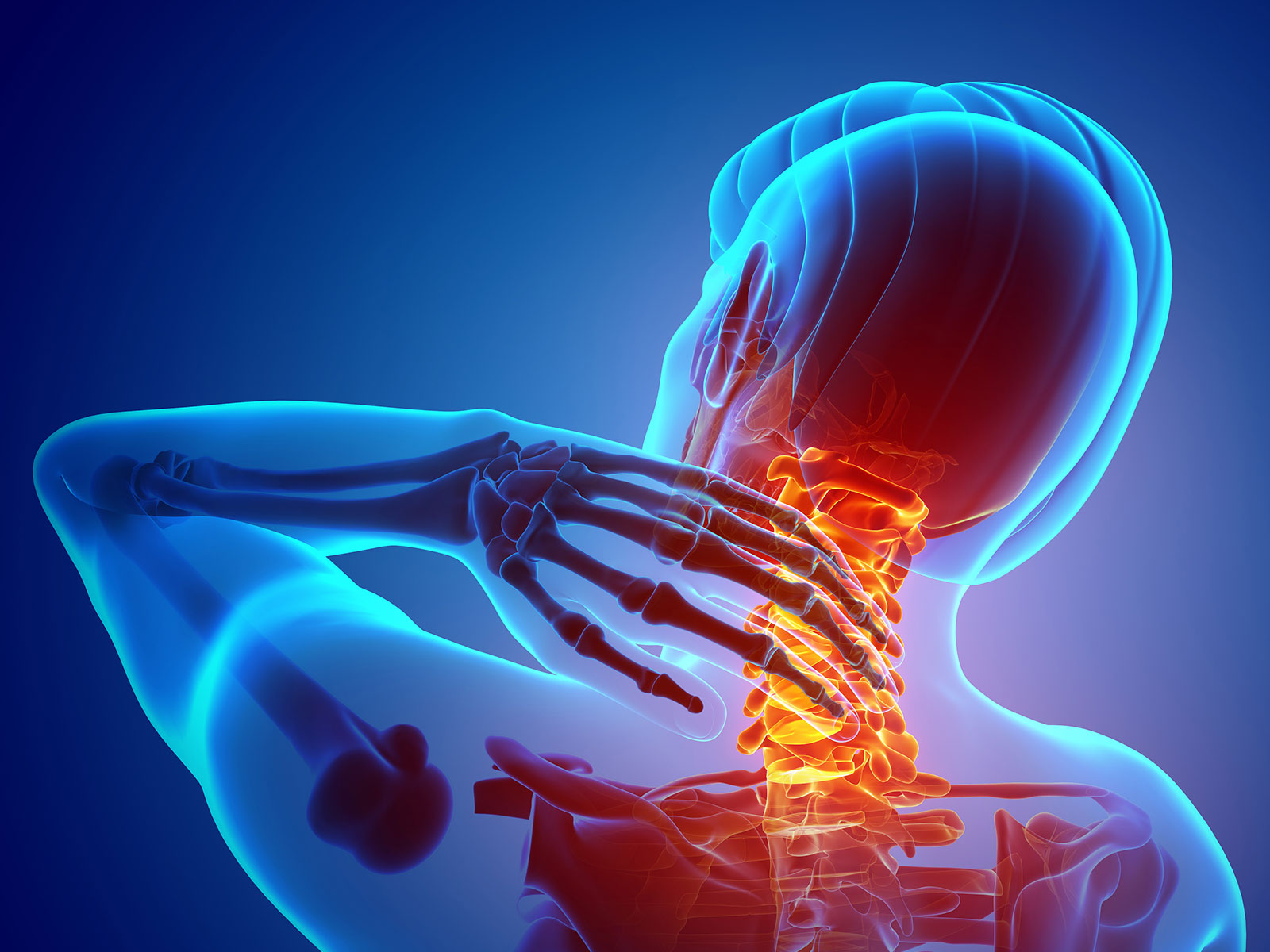Pinched Nerve in the Neck: Treatment Options for Cervical Radiculopathy
Neck pain is one of the most common musculoskeletal conditions, and it can negatively impact your quality of life. If you're experiencing chronic neck pain, then you could have cervical radiculopathy, which is the medical name for a pinched nerve. This condition occurs when a nerve in your cervical spine is compressed or irritated. Symptoms such as severe neck pain, radiating arm discomfort, numbness, and muscle weakness are common. Understanding the causes of neck pain, recognizing the symptoms of a pinched nerve, and exploring effective treatment options are crucial steps toward relief and recovery.

What Causes a Pinched Nerve in the Neck?
The cervical spine comprises seven vertebrae, labeled C1 through C7, which support the neck and head. Between these vertebrae are intervertebral discs that act as cushions, absorbing shock and facilitating movement. Several factors can contribute to the development of a pinched nerve in the neck:
- Herniated Discs: A tear in the disc's outer layer can allow the inner gel-like substance to protrude, pressing on nearby nerves.
- Bone Spurs: Extra bits of bone that form due to arthritis and crowd the space where nerves pass through.
- Trauma: Injuries from accidents or falls can displace vertebrae or discs, leading to nerve impingement.
- Degenerative Disc Disease: Age-related wear and tear can cause discs to lose hydration and elasticity, reducing their height and leading to nerve compression.
Recognizing the Symptoms
A pinched nerve in the neck isn’t just about neck pain. It can show up in a variety of ways, including:
- A sharp, burning, or aching pain in the neck, shoulders, or arms
- Numbness or tingling, often in your hands or fingers
- Weakness in your arm or hand, making it hard to grip things
- Pain that gets worse when you turn your head or look down
If any of this sounds familiar, don’t panic! There are plenty of things you can do to feel better.
How to Diagnose a Pinched Nerve in Your Neck
Accurate diagnosis is essential for effective treatment. An orthopaedic surgeon will typically perform a thorough physical examination, assess your medical history, and may recommend imaging such as X-rays, MRI scans, or CT scans to identify the exact cause and location of nerve compression.
Non-Surgical Treatments
For some people, a pinched nerve can improve with a little time and rest. Here are some tips to help you heal:
Rest and Adjust Your Activities
Avoid movements that make the pain worse—like heavy lifting or staring down at your phone for hours. Give your neck a break and allow inflammation to go down.
Use Ice and Heat Therapy
Ice helps reduce swelling: apply for 15-20 minutes every few hours.
Heat relaxes tight muscles: use a warm compress or heating pad after the first couple of days.
Try Over-the-Counter Pain Relievers
Nonsteroidal anti-inflammatory drugs (NSAIDs) like ibuprofen or naproxen can help with pain and inflammation.
Work on Your Posture
Slouching can make things worse! Keep your head aligned with your shoulders and take breaks if you’re working at a desk or using your phone for long periods (tech neck).
Physical Therapy and Exercises
A physical therapist can teach you gentle stretches and strengthening exercises to improve flexibility and reduce pressure on the nerve. Simple moves like chin tucks and shoulder rolls can make a big difference.
Consider Steroid Injections
If the pain isn’t letting up, a doctor might recommend a corticosteroid injection to help reduce inflammation around the nerve.
When Surgery Might Be Needed
If your symptoms last for months, or you’re experiencing significant weakness, then surgery could be an option. Fusion and disc replacement are the two most common procedures.
Fusion in Your Neck
The first surgical option is Anterior Cervical Discectomy and Fusion (ACDF). This approach involves removing the damaged disc and fusing the adjacent vertebrae to stabilize the spine. While effective in relieving symptoms, fusion eliminates motion at the treated segment, which may increase stress on adjacent levels over time.
Disc Replacement in Your Neck
The second surgical option is Cervical Disc Replacement (CDR). Also known as arthroplasty, this procedure entails removing the diseased disc and replacing it with an artificial disc designed to maintain natural movement. CDR aims to preserve motion at the affected level and reduce the risk of adjacent segment degeneration.
Recovery and Rehabilitation
Postoperative recovery involves a period of rest followed by gradual reintroduction of activities. Physical therapy plays an important role in rehabilitation, focusing on restoring strength, flexibility, and function. Sticking with your surgeon's recommendations and going to regular follow-up appointments are vital for proper healing. Once you’re feeling better, take steps to keep your neck healthy. Here are a few tips:
- Maintain Good Posture: Keep your ears in line with your shoulders, especially when using a computer or phone.
- Stay Active: Regular exercise keeps your spine strong and flexible.
- Set Up an Ergonomic Workspace: Adjust your computer screen so it’s at eye level and use a chair that supports your lower back.
- Take Breaks: If you spend hours looking down at your phone or reading, stretch your neck regularly.
Get Help for a Pinched Nerve
A pinched nerve in your neck can be very painful and frustrating. There are non-surgical and surgical treatment options, and it's important to get medical advice if your symptoms persist. The spine specialists at The Centers for Advanced Orthopaedics are here to help you with diagnosis and treatment.

